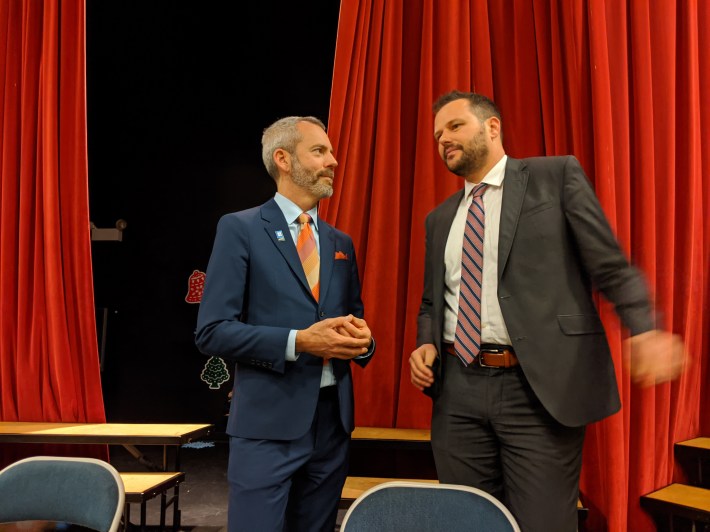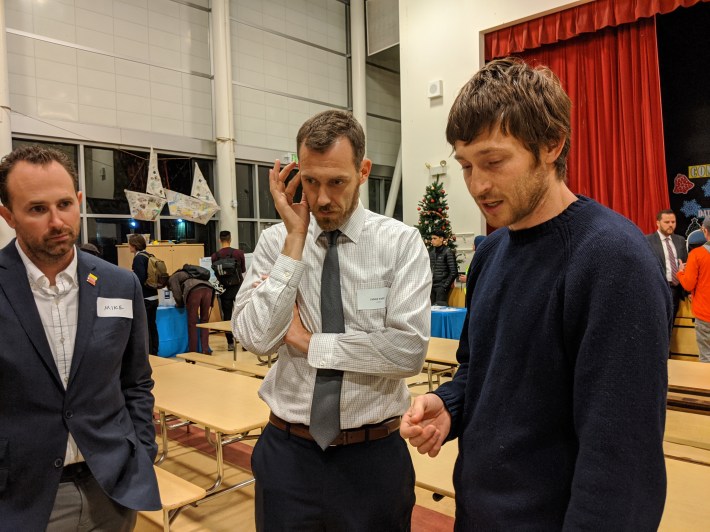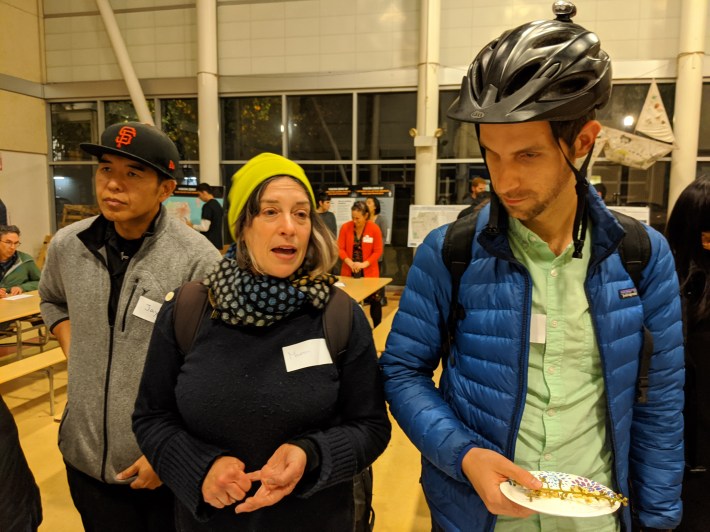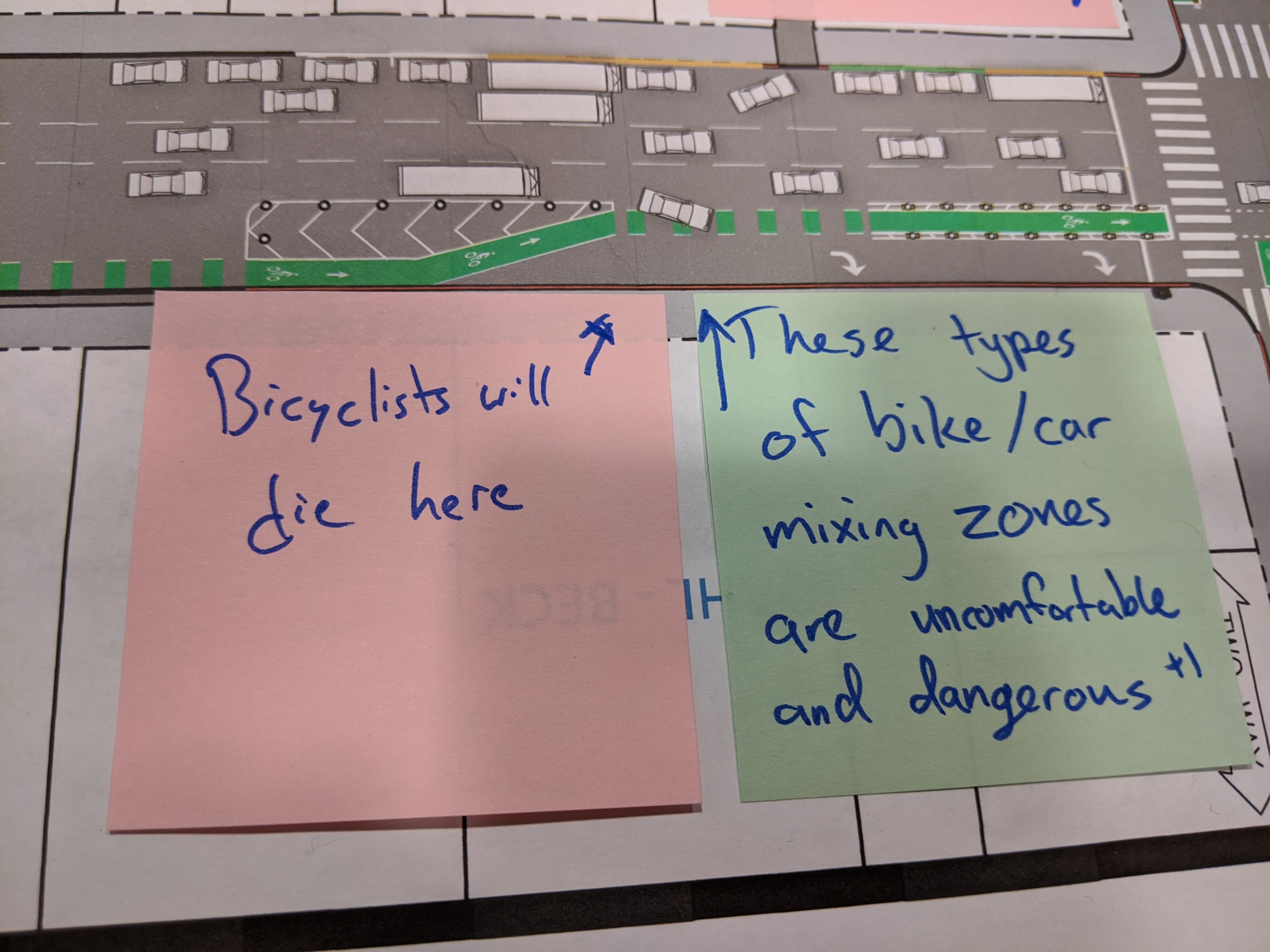Plans for two quick-build parking-protected bike lane safety projects, on Howard Street from Embarcadero to 3rd and on 7th from Townsend to Folsom, were reviewed yesterday evening by some eighty participants at a public meeting at the Bessie Carmichael Elementary School school in the South of Market Neighborhood. However, many who participated in the meeting said they were unhappy with the design of the intersections.

“We’re going to approve two quick-build projects tonight,” said Supervisor Matt Haney, who praised Mayor London Breed’s directive to streamline the approval process for safety projects. An outreach meeting is all that is now required to approve such a project, rather than going through several outreach meetings and then waiting for legislative approval. Haney added that if they’d had a quick-build system in place years ago, it would have saved lives. “We didn’t move fast enough.”
"Data tells us that 75 percent of injuries occur on 13 percent of the network of streets," said Jaime Parks, Livable Streets Director for SFMTA. And many of those streets are in SoMa, thus the need for the streamlined process.

With lives at stake, faster, of course, is better. But "the intersections are disappointing," said bike-advocate Parker Day, pointing to the table maps. "That's not built to the eight-eighty standard."

The eight-eighty standard refers to designing bike infrastructure that's safe and comfortable enough for both an eight-year-old child and an eighty-year-old adult. Neither group is in any position to zipper through a mixing zone with turning car and truck drivers.
Furthermore, protected intersections, the alternative to mixing-zones, are considered "best practices" by the National Association of City Transportation Officials. According to a report put out earlier this year entitled "Don’t Give Up at the Intersection," NACTO officials point out that "43 percent of urban bicyclist fatalities occurred at intersections in 2017."
The organization recommends that bike-safety projects employ:
Protected intersections, which keep bicycles physically separate from motor vehicles up until the intersection, with greatly reduced crossing distances, improved sightlines, and dramatically safer results on the streets where they have been installed.
"Can we not look at protected intersections?" asked Matt Brezina, one of the co-founders of the People Protected Bike Lane movement in San Francisco, of the SFMTA's Parks, at the meeting.
"We're looking to see if we can do something like that," was the answer.
There were other cautions about the designs. "I'm concerned that people will still park in the 'protected' bike lane," said Maureen Persico, co-founder and organizer of the “People Protected Bike Lane" demonstrations. Stephen Braitsch, organizer of October's "Day of Action" to quantify bike-lane violations, said he wants the city to buy additional safe-hit posts and make sure they're placed close enough together that a car can't simply scoot around them to reach the curb. "The distance between them should never be longer than a car length."

"This isn't just a place where we distribute traffic to the freeways," said Jeffrey Tumlin, incoming SFMTA director, in his opening remarks to the room full of advocates and concerned residents. "Streets need to be about great places that welcome all kinds of people."
Of course, as the design of the intersections show, one of the first challenges for Tumlin will be to change a planning culture that still treats bikes as if they are just another element of that traffic, as opposed to unprotected human bodies on two wheels. He will need to convince the agency that a human on a 20-to-30 pound bike can't zipper through a mixing-zone intersection with a fast moving, two-to-five ton automobile--or 14,000 pound truck. Dutch engineers, NACTO guidelines, and even the city of San Jose have proven that quick-build protected intersections are safer, don't cost more, don't require more space, and can be installed quickly and effectively, despite all the excuses advocates hear in San Francisco.
Despite that, as the Post-it note in the lead photo highlights, the city is again on track to "quick build" more cyclists into hospitals and morgues. Protected bike lanes with unprotected intersections are certainly better than nothing, but, as Haney said in his opening remarks, there are already too many people absent from these meetings because they were killed by sub-par designs.
Work should begin on the projects in the Spring of next year, according to SFMTA officials.
Support our work by giving to our end-of-year fundraising drive. Click to donate.






